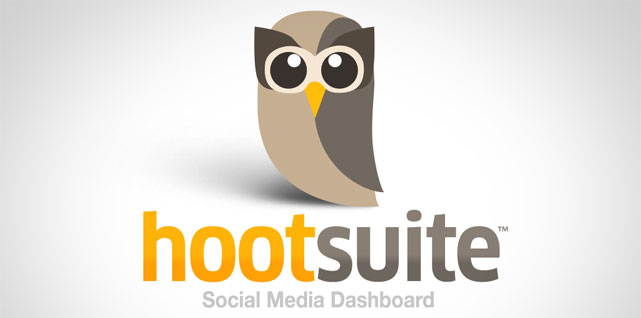How To Streamline The Handover Process Of Leads Between Marketing And Sales
0
As mentioned in my previous blog post we are in the middle of our budget 2019 exercise which means analysing lots of sales, marketing and market data in order to come up with an ambitious plan for next year. One topic I would like to pay attention to in this post is about the hand over process of leads from marketing to sales. As of the beginning of this year we started with something new: lead development.
What I can tell you upfront is that this process remains a human process.
Business Development Reps (BDR) nurturing leads against certain criteria in order to increase the quality of leads we as marketing deliver and to increase the changes for sales to close the deal. What I can tell you upfront is that this process remains a human process. Although we try to capture in descriptions, definitions and models, at the end it is all about trust and the willingness to see the bigger picture and help each other.
The theory
Looking at our customer buying journey model below I am now specifically looking at the process between MQL (marketing qualified lead) and SAL (sales accepted lead). In the Sirius Decisions demand waterfall it is defined as the step from TQL (teleprospecting qualified lead) towards a SAL. For a selection of MQLs we can afford to pay extra attention to these leads to further qualify.

Leads Development takes care of this and nurtures these leads until a SQL (sales qualified lead). Once a BDR reaches that stage he offers the lead to a sales rep. This sales rep checks if it has been qualified against the agreed criteria and can either accept or reject.
By nature sales are eager to sell and close deals.
If the sales accepts it enters into its sales pipeline which means it’s worth the effort to further qualify and work the opportunity. Criteria the BDR is qualifying against are also known as P-BANT:
- P – Identified pain and/or compelling event
- B – Budget available
- A – Stakeholders known
- N – Identified need
- T – Time frame known
By nature the BDR wants to do the job as good as possible since the more leads accepted, the better the BDR is doing the job. The same applies to the sales rep, by nature they are eager to sell and close deals. This creates a kind of natural balance between these two disciplines.

So far so good. After 10 months now we gathered quite some data and experiences by marketing and sales. If we are looking into the conversion data we see the following:
- Conversion % from MQL to SAL for the different types of solutions we offer varies from 25% to 90%, 82% is seen by Sirius Decisions as the industry benchmark for our type of companies
- Conversion % from MQL to SQL varies from 70% to 89% whereas benchmark is about 30%
- Conversion % from MQi to MQL is about 40% whereas benchmark is 46%
Conclusions and insights with regards to the 1st bullet point I will discuss in the next block. The MQL>SQL % seems to be extremely high. I need to dive into this number. Looks like something is not aligned in terms of definitions. Conversion from MQi>MQL are quite in line.

This mainly has to do with automate as much as possible the validation of the data entered by the prospect. We are in the middle of updating all our web- and subscription wizard forms with real time connected Dun & Bradstreet databases in the backend. So once someone is entering data we enrich and clean-up this data automatically in real time. This will have a further positive impact in this conversion %.
The real world
There is quite a big variance looking into the MQL to SAL conversion mentioned under bullet 1 above. Differences are related to the type of solutions and type of sales cycles this is about. The question is what conclusion can you derive out of these numbers and what kind of discussion do you need to have between sales and marketing to further optimize? Coming from sales you could say the quality of the leads are not sufficient enough, coming from marketing you could say that sales is qualifying the leads too rigid. This is where an open conversation is needed to further optimize the collaboration between the two.
Although the criteria seem to be crystal clear there is a lot of room for interpretation
A 25% conversion against the benchmark of 82% seems to be far off. This means that for some reason sales is accepting a too limited number of SQLs. What could be the reason behind this? Is it the quality of the leads? But the criteria are clear so how comes? Or is sales waiting until the lead is nurtured in such a way they have a high chance of scoring the deal?
And here the extremely interesting discussion starts about definitions. Although the criteria seem to be crystal clear there is a lot of room for interpretation which leads to noise and can lead to playing the game in a completely different way. This raises questions so what are the key questions we need to answer and agree upon on both sides?
- What is considered as an opportunity?
- When is it worthwhile for a sales to start putting effort in an identified opportunity?
- With whom the prospect better of talking about the desired solution for it’s problems?
- Face to face contact with the prospect at a certain moment in time is required to make some further steps in the buying process
Take the first question. When we talk to a prospect in a very early stage, how big is the chance that the contact will be open and transparent about the budget? So if all other criteria are met and the BDR is not 100% sure about budget being available, what to do? According to the theory we can not offer this MQL as a SQL to sales. But at the other hand, knowing it is very early stage, an eager sales rep could also accept since he understands and sees it as part of the challenge and sales job to take it on. On our side of marketing we can further specify what we mean by this criteria.
Isn’t it more about the prospect being price aware? So that at least when the monthly subscription starts at € 500,00 the contact doesn’t expect it to be € 50,00. Or that if sales expects license deals of € 50,000.00 plus we don’t come up with opportunities of € 5,000.00. So here we have the ability to be more clear about what is meant and what the intention is of a specific criteria. This leads to better describing for some criteria the intention that we have like:
- Budget: which price range are we talking about from a sales perspective? Where do they want to spend time on and which ones not?
- Timeframe: within which specific period of time we expect to close the deal?
- Need: what company size is sales expecting to work on?
At the same time the sales rep also knows when the lead is accepted it appears in it’s pipeline and management will start to track and monitor. And off course accepting wrong leads can have major impact on the scoring % to a deal.

There are also examples where conversion % from MQL to SAL are around 90%. There you could say sales accepts leads too quickly. There we might have room on the marketing side to tighten the criteria slightly more to have more balance between what needs to be done by marketing and sales. Having a benchmark number helps to at least have a guidance which direction to work towards. And this is where you need some common sense between marketing ans sales. Because how can a sales accept leads too quickly? Well that means that with it’s specific skill set it could be a waste of time for a sales rep to spend time on. In other words this part of the qualification could also have been done by a BDR. And this is a fine line both marketing and sales management need to look into.
Path of return
It is utmost important that once the sales rep does his discovery call to check whether the SQL criteria are met there is open communication with the BDR. First of all this continuous feedback loop makes the BDR better understand how to qualify and how to interpreted the criteria.

And if it seems that one of the criteria hasn’t been met the sales should be able to give the lead back to the BDR with the assurance once further qualified, the lead returns to the same sales rep again. Trust and having confidence in each other is key!
Human factor
Marketing and sales management need to be highly engaged in the process of further refining and optimizing this hand over process. Off course definitions, criteria and interpretations can be defined and written down. At the end it is very much about common sense, trust and confidence between the two departments. Both should be aware and conscious about the fact that marketing isn’t sales and sales isn’t marketing. In other words we marketeers are lacking skills that sales have and vice versa.
It is about putting the right skills and resources in front of the prospect in order to guide and help them in the best possible way. For the prospect to find the best value against the best price and for us to start a sustainable relationship with a potential ambassador for the solutions that we offer.

Having insights on both sides how the incentive structure is build up is even worthwhile to spend time on. Behavior of both marketing and sales people in performance based roles are also driven by their incentives.
Both should be aware and conscious about the fact that marketing isn’t sales and sales isn’t marketing.
E.g. making sales conversion % a big part of the sales incentive has the risk it works contradictory to what marketing stands for. It makes sales reluctant to accept leads. Having an incentive which is about the sales conversion from MQL to deal could be a solution for this. Everything in between like SQL to SAL conversion is in the hands of marketing AND sales having both the same interest in smoothening this step as much as possible.
Alignment
Having said this shows that after all it remains a process highly dependent on the human interactions between marketing and sales. Off course we try to capture in definitions, descriptions and rules of engagement but finally it is about having common sense, trust and confidence in each other. A professional approach looking in an objective way to all data that has been gathered. The challenging but nice triangle between the content, the process and the human interaction that leads to excellence.














